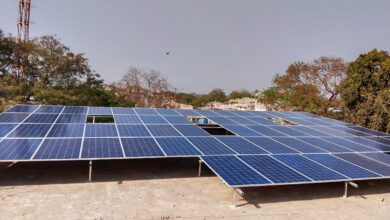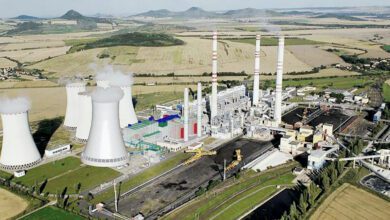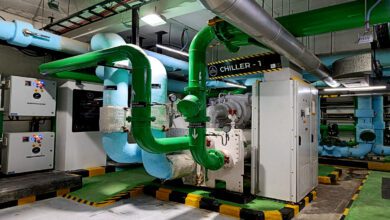FM Nirmala Sitharaman presents a green budget in Union Budget for 2022-23. The emphasis was laid on cutting down carbon emissions and achieving environmental and climate goals. Many announcements made during her budget speech pointed towards attaining a carbon neutral economy. Power production is one of the important industries that impacts economy and climate both. India’s 55% energy needs are fulfilled by coal fired power plants. Approximately 632.6 million tonne of coal is used for generation of this energy. Thermal Power Plants are significant contributor to the carbon emissions. To facilitate CO2 savings of nearly 38 MMT annually from these plans, FM announced co-firing of 5-7% biomass pellets in thermal power plants. Ministry of Power had notified last year that all coal fired power plants should mandatorily use at least use 5% of biomass pellet mixed with coal to generate electricity. The step will reduce the import of coal in the country. National Thermal power Corporation (NTPC) had earlier successfully tested firing of the biomass pellets in their Dadri Thermal Power Plant (TPP) and had taken steps to procure biomass pellets for their power station across the country.
India currently produces about 450-500 million tonnes of biomass per year. This is slated to increase further due to rise in demand.
“The use of alternative fuel has been re-emphasized with a specific direction to incorporate 5-7% use of Bio-mass pellets in thermal power plants. This is a welcome move that will accelerate the growth of biomass industry, in turn gradually reducing dependence on fossil fuels and generating employment. The country has been reeling under the problem of seasonal stubble burning – this positive step will further boost increase of agricultural waste management leading to a cleaner environment” said Swapnil Kardile, CEO, Rajaram Bioenergy.
This will lead to significantly reduce air pollution due to stubble burning. Utilising that stubble to make biomass pellets will also provide extra income to farmers and job opportunities to locals.
Four pilot projects for coal gasification and conversion of coal into chemicals required for the industry have also been proposed to evolve technical and financial viability.
Vinaya Varma, MD, mjunction services ltd, said, “Following India’s Net Zero commitment articulated at the COP26 summit, this year’s Union Budget speech rightly focuses on the key themes of energy transition and climate action. The announcement of the setting up of four pilot projects for coal gasification and conversion of coal into chemicals highlights the country’s stance that there should be mindful utilisation of resources. Energy transition requires major investments and the planned issuance of sovereign green bonds will help raise the required funds at competitive rates to support the massive green infrastructure initiative needed to progressively bring down our carbon footprint.”
FM Nirmala Sitharaman presents a green budget in Union Budget for 2022-23. The emphasis was laid on cutting down carbon emissions and achieving environmental and climate goals. Many announcements made during her budget speech pointed towards attaining a carbon neutral economy. Power production is one of the important industries that impacts economy and climate both. India’s 55% energy needs are fulfilled by coal fired power plants. Approximately 632.6 million tonne of coal is used for generation of this energy. Thermal Power Plants are significant contributor to the carbon emissions. To facilitate CO2 savings of nearly 38 MMT annually from these plans, FM announced co-firing of 5-7% biomass pellets in thermal power plants. Ministry of Power had notified last year that all coal fired power plants should mandatorily use at least use 5% of biomass pellet mixed with coal to generate electricity. The step will reduce the import of coal in the country. National Thermal power Corporation (NTPC) had earlier successfully tested firing of the biomass pellets in their Dadri Thermal Power Plant (TPP) and had taken steps to procure biomass pellets for their power station across the country.
India currently produces about 450-500 million tonnes of biomass per year. This is slated to increase further due to rise in demand.
“The use of alternative fuel has been re-emphasized with a specific direction to incorporate 5-7% use of Bio-mass pellets in thermal power plants. This is a welcome move that will accelerate the growth of biomass industry, in turn gradually reducing dependence on fossil fuels and generating employment. The country has been reeling under the problem of seasonal stubble burning – this positive step will further boost increase of agricultural waste management leading to a cleaner environment” said Swapnil Kardile, CEO, Rajaram Bioenergy.
This will lead to significantly reduce air pollution due to stubble burning. Utilising that stubble to make biomass pellets will also provide extra income to farmers and job opportunities to locals.
Four pilot projects for coal gasification and conversion of coal into chemicals required for the industry have also been proposed to evolve technical and financial viability.
Vinaya Varma, MD, mjunction services ltd, said, “Following India’s Net Zero commitment articulated at the COP26 summit, this year’s Union Budget speech rightly focuses on the key themes of energy transition and climate action. The announcement of the setting up of four pilot projects for coal gasification and conversion of coal into chemicals highlights the country’s stance that there should be mindful utilisation of resources. Energy transition requires major investments and the planned issuance of sovereign green bonds will help raise the required funds at competitive rates to support the massive green infrastructure initiative needed to progressively bring down our carbon footprint.”













